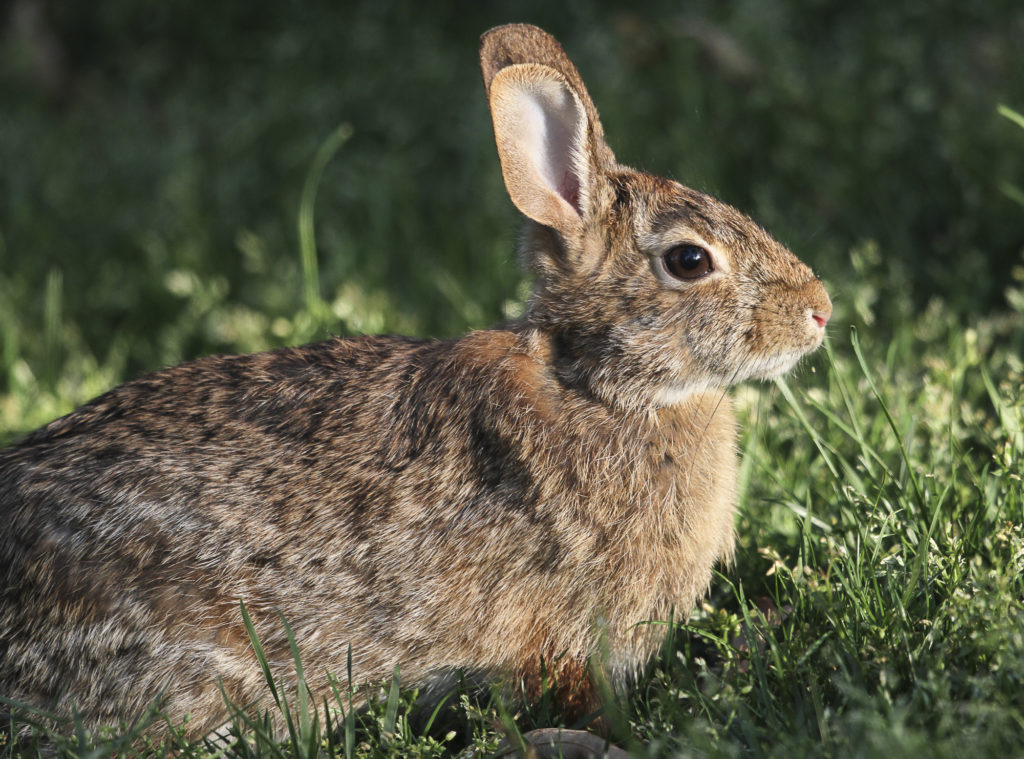Creature Feature

On the Trail of the Cottontail
By Wayne Bierbaum
Last year, while taking a walk at Quiet Waters Park, the path took me near a calm and “chilled” rabbit, stretched out in the sun near a dense shrub. All it did was twitch its nose as I walked by. When a dog on a leash paraded past, it tensed and sat up but stayed put. When I walked past a second time several minutes later, it was lounged out again. I then realized that, around my neighborhood, there did not seem to be any rabbits when only a few of years before rabbits seemed to be everywhere.
Rabbits occur on every continent except Antarctica. There are 30 species of wild rabbits and many domesticated breeds. The domesticated ones range from the huge Flemish Giants which weigh up to 22+ pounds and measure 4-feet long, to the Netherland Dwarf which weighs in at little more than a pound.
Our local cottontail rabbits usually weigh just under 3 pounds. A southern species, the swamp rabbit, are a little bigger than the cottontail. They are common in the southern swamps and salt-marshes and are avid swimmers.
When I lived in Florida, I would take hikes near the St. Peterburg-Clearwater Regional Airport and would occasionally see jackrabbits, mostly common in the West. I was told that the animals were used to train greyhounds and they got loose and began wild breeding. However, jackrabbits are not classified as a rabbit but rather a hare. Hares are larger and have longer legs than rabbits. They run faster and can weigh up to 6 pounds.
The cottontail rabbits are very prolific and can have four litters of up to 12 kits a year. The young will leave the shallow fur-lined ground nest in just 12 days and are independent in a month. The young are of reproductive age within three months. A female could have 30-some kits a year and the female offspring are mature in six months. Which means that one rabbit could be responsible for around 130 new rabbits in a year.
Unusually, female rabbits do not have routine estrus cycles. Their ovulation is triggered by a sexual encounter. Males (called a buck) have range that is about twice that of the females (called a doe). Bucks will chase and woo the does by running at them in circles and by jumping over them. In the spring, when several rabbits run into each other in one field, the courting ritual can be quite dramatic.
Rabbits are prey for many animals, which is why I think the population around me appears to have disappeared. At the same time the rabbits became scarce, foxes became more common. On the Eastern Shore, I once was able to watch a golden eagle hunt for rabbits.
Without predators, the rapid reproduction rate would have us covered in rabbits in just a few years. That happened in Australia in 1859 when rabbits for hunting were released. Now they are overwhelming native animals and altering the landscape.
The balance of predator to prey can be very delicate and removing too many predators could have us looking like Australia.
